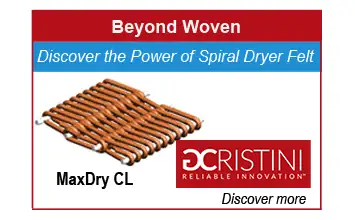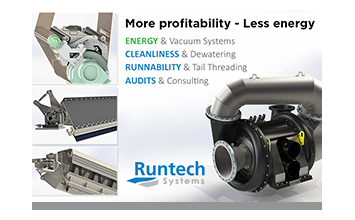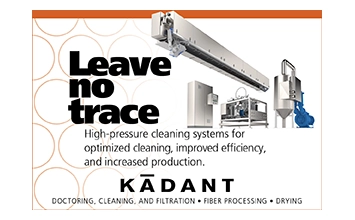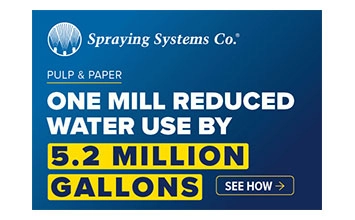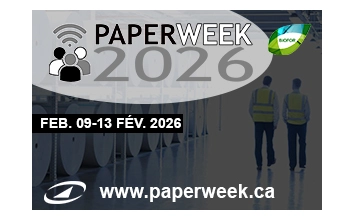In modern day paper mills, a lot of newer machines have automation built into them. However, there are a lot of legacy mills that use paper machines that have been around for decades. Simple upgrades can help make a machine smarter, operate more efficiently, and help it keep up with increasing speeds and demand required by today’s market.
There are two specific systems that can help your shower systems stay running in excellent condition, the automatic brush shower and the oscillator. Both systems have been around for a long time, however modern technology helps to keep them running more smoothly with the increased demand paper manufacturers see.
Automatic Brush Showers
The Automatic Brush Shower can be a great way to update and bring automation to the shower systems in a paper mill facility. In today’s world, paper makers are using more whitewater in their shower systems than ever before. While this is great for sustainability goals and initiatives, it can wreak havoc on shower systems that use nozzles with small orifices. While brush showers and even automatic brush showers have existed for years, they have not yet been able to use sensor data to help determine when a brush cycle is necessary.
Manual Brush Showers
A manual brush shower is only as good as how often maintenance personnel operate it. With the labor shortage in paper mills lately, it is not uncommon for maintenance personnel to operate these manual brush showers on a regular basis. Best practices currently state that all the manual brush showers should be operated at least once per shift, or once every 8 hours. This may not always be the case though. Depending on where the brush wheel is and how difficult it can be to access, it is possible for the shower to be overlooked during manual operation. This can lead to several negative outcomes including but not limited to nozzle clogging, uneven moisture profiles, dirty paper machine fabrics, and increased operating costs.
 Figure 1: Manual Brush Shower
Figure 1: Manual Brush Shower
Automatic Brush showers
The legacy automatic brush showers are a big step up from the manual brush showers. Older automatic brush units can be operated in two different ways. They can be operated with the push of a button on a controller, or they can typically be set to run on a specific time interval. This is convenient because instead of personnel having to climb all around a paper machine to manually turn the dozens of manual brush wheels, they can simply push a button, and the electric motor will take care of operating the internal brush mechanism and flush out the built-up debris inside of the shower. If the controller has a timed operation function, the unit will automatically run each time the timer counts down from the last operation. We previously recommended operating a brush shower once a shift, so this way the programmable timer would be able to be set accordingly. This way it makes it much harder to miss a critical operation like operating a brush mechanism to prevent clogging and product quality mishaps.
 Figure 2: Automatic Brush Shower
Figure 2: Automatic Brush Shower
Another benefit of most automatic brush shower controllers is the ability to control multiple automatic showers in a single controller, but also the controller communicating with the paper mill’s DCS. With multiple showers able to be controlled by a single controller, this allows less wall space to be taken up by individual controllers for each shower. Because paper machines can have dozens of brush showers on them, it can become a serious issue when having to mount dozens of control panels in an accessible area for personnel. Not to mention, the cost savings that could be had with a single controller versus dozens of controllers. There are also controllers which can communicate with the mills DCS directly. This would allow a machine operator in the control room to pull up the data from the controller on screen without needing to physically walk out to where the controller is mounted. A machine operator would be able to view critical details like how many times the brush has been operated, when the last time it was operated was, and if there are any errors that the system may have. The machine operator would also have the ability to manually start another brush cycle if deemed necessary from extenuating circumstances.
 Figure 3: Automatic Brush Shower Controller
Figure 3: Automatic Brush Shower Controller
The next big thing in AutoBrush technology is what we like to call Smart Showers. The smart shower uses an Automatic Brush, but it is also paired with additional sensors like a pressure transducer and a volumetric flow meter. With all of these connected to a PLC, all of the data can be viewed in one place. It is now possible to track how much liquid is flowing through your individual showers. Using this data will help pick specific time intervals in which worn out nozzles should be replaced with new ones to keep the process efficiency at its highest. The flowmeter can also be used to help track total water usage within the mill. This can help track such metrics for sustainability goals as well. With using both the flowmeter signal and the pressure transducer signal, it is possible to even automate the operation of the AutoBrush with these two inputs. A boundary condition can be set so if the flow reduces (due to clogged nozzles) and the pressure increases (due to reduced flow), then it would trigger the AutoBrush to complete a cleaning cycle, further adding automation to the process. This can help keep your process fully optimized and free up mill personnel to work on more important tasks.
Shower Oscillators
The oscillating systems for HP showers are a big part of how they operate. Without the use of shower oscillators, the high-pressure solid stream spray patterns would tear through and destroy the paper machine fabrics. Proper oscillator speeds will also affect how well the fabrics get cleaned by the HP showers.
 Figure 4: Oscillating and Automatic Brush Shower
Figure 4: Oscillating and Automatic Brush Shower
It is important for the oscillator on an HP shower to be matched to the speed at which the paper machine operates at. There are fixed speed oscillators and there are line-speed synchronized oscillators. Many mills will have fixed speed oscillators which do not adjust when the machine speed changes. They can usually be programmed to operate at different speeds manually, but this requires work to go to each individual oscillator’s control panel, make the necessary adjustments, and continue on. Even small changes in machine speed though can affect how well a fixed speed oscillator effectively cleans.
 Figure 5: Paper Machine Fabric cleaned using a Fixed Speed Oscillator
Figure 5: Paper Machine Fabric cleaned using a Fixed Speed Oscillator
An oscillator should be set to move the shower 1 orifice diameter per rotation of the entire machine fabric. Industry standard for orifice diameter of an HP solid stream nozzle is .040” or 1mm. By setting up the oscillator this way, complete cleaning coverage can be achieved. You can change how quickly the entire fabric gets cleaned by altering the stroke of the oscillator matched with the nozzle spacing on the HP cleaning shower. Typically for a 3” nozzle spacing, a 6” oscillating stroke is used for double coverage. If you have 6” nozzle spacing, a 12” stroke is typically used to maintain the same double coverage. With many machines and mills looking to run faster and faster to keep up with industry demand, it is important to make sure the oscillators are able to keep up and are set properly.
With a line-speed synchronized oscillator system, there is an input to the controller for the line speed of the machine. Whenever the line speed of the machine changes, the controller for the oscillator will automatically adjust the oscillation speed to make sure the shower moves 1 orifice diameter per rotation of the fabric. This is very helpful during times when the machine is not running at normal speed. During ramp up or ramp down, the oscillator will automatically adjust. If the machine begins to run faster, the oscillator will be able to keep up and make sure the fabrics are effectively cleaned so production issues do not occur. The difference between a line-speed synchronized oscillator and a fixed speed oscillator not setup properly can be seen in the image below. The difference in cleaning effectiveness is quite staggering.
 Figure 6: Comparison of a Line-Speed Synchronized Oscillator to a Fixed Speed Oscillator
Figure 6: Comparison of a Line-Speed Synchronized Oscillator to a Fixed Speed Oscillator
Having an oscillator that has line-speed synchronization is only one part of the solution with regards to automation. Having a connected controller also helps with automation. With a controller that can communicate with the mill’s DCS, it is possible to remotely start, remotely stop, view any alarms, view the current status and position of the shower, and make minor adjustments as necessary. This feedback and remote-control ability allows more mill personnel to engage in more important mill maintenance activities instead of walking to individual oscillator controllers to monitor their performance. This can now be simply done within the control room by a machine operator. To further simplify things, there are now controllers that can control multiple oscillators (up to 3 currently) on a single controller. This means that a mill can save money on their oscillator systems should it need to be replaced by only requiring 1 controller to control up to 3 oscillators. The cost savings is staggering, both in a sense of cost of materials for controllers as well as the cost of personnel able to focus on more important tasks at the mill.
These two products demonstrate how incorporating automation into your showering equipment can help save on operating costs, time, and provide valuable feedback to keep your processes running at their best. By adopting technologies like these, your mill can improve your process control and allow mill personnel to focus on more important tasks instead of routinely watching over simple ones.
About the Author
Bernard Pyzdrowski is the project engineer for pulp and paper Industries at Spraying Systems Co.
About Spraying Systems
Spraying Systems Co. is the world’s leading manufacturer of spray nozzles. Every day, our local spray technology experts help customers optimize operations and create more sustainable manufacturing practices. With tens of thousands of standard products, we have the right nozzle for your application – and we ship most standard products in one day. If you need a special product or material, contact us! We develop hundreds of custom nozzles, injectors and headers every year. Our engineering and manufacturing resources can help solve your toughest spray technology challenges.






